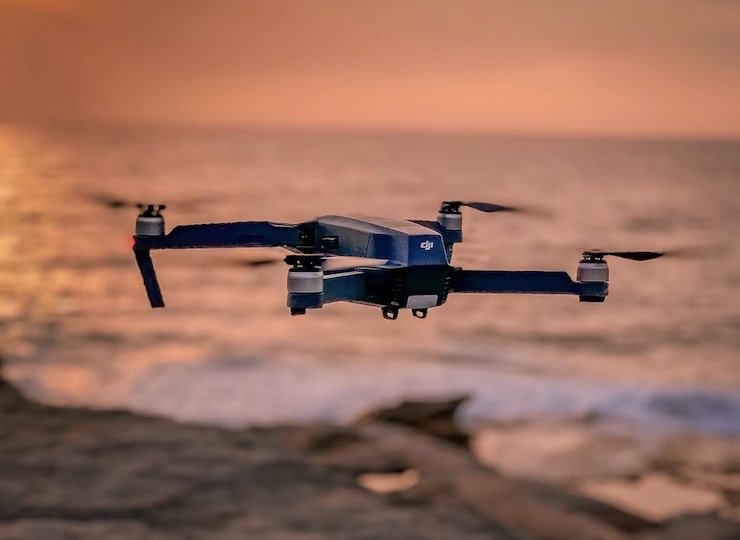
Once a drone is airborne, it is pretty easy to fly. The most difficult aspects it getting a drone to takeoff smoothly and in control and then getting it to land without crashing. These two aspects of drone flight are critical to master before piloting a drone at much of any distance. To make things easier, many companies provide takeoff and landing pads to assist in this. The sturdy pad gives a drone a level spot to smoothly liftoff and touch down. It is particularly helpful to use a landing pad if you plan to fly a drone off uneven terrain that may be rocky, dusty, or muddy. It some situations being able to land a drone on an inclined surface may be needed and unfortunately, this could cause a drone to roll and crash.
A team of students from the Createk Engineering Lab at the Université de Sherbrooke has begun looking into ways to modify a drone that would allow it to land on an inclined surface such as a roof. Established in 1954 in a suburb of Montreal, the Université de Sherbrooke is a French language institution of around 40,000 students. The Createk Engineering Lab is a quantum engineering and information lab that has become world renowned for its innovative studies. Recently, a project was overseen by Professor adjoint Alexis Lussier Desbiens looking into the challenges of landing a drone on a surface that could otherwise prove disastrous. To test their theories and modifications, Professor Desbiens had his students build two inclined surfaces of the same degree, one smooth and one rough with roofing tiles. A stop motion camera was set up to record what happened when a drone landed on the surfaces under different circumstances.
Rather than using a custom built drone, the team wanted to see how their concepts could be applied to and improve an off the shelf drone. The small 4 rotor drone, approximately weighing 2lbs, had four individual landing legs, as opposed to some models that land on a connected leg frame. They ran each series of tests through 2 separate trials. In the first round of testing, no modifications to the drone’s thrust system were made. In the second round of testing the team played around with how the drone would land under different rotor thrust scenarios. The camera recorded the drone landing and then using stop motion footage, the precise consequences of each landing could be plotted and analyzed.
Without modifying the thrust of the rotors the drone would bounce, slide, or flip off of the inclined surface. It did not matter if the drone was landing on a low or high friction surface when it landed it was unsuccessful. Then they changed how the rotors spun in coordination with each other. As explained in the paper written on their research, “With the development of a bidirectional rotor, landing maneuvers could benefit from rapid thrust reversal, which would increase the landing envelope without involving the addition of heavy and complex landing gears or reduction of payload capacity.” On both low and high friction inclined surfaces, Professor Desbiens and his students were able to get the drone to land. It would bounce and slide some, but it was able to come to a stop without trying to right itself to a horizontal position or crashing.
The question is, why would a drone need to be able to land or takeoff from anything other than a horizontal surface? There are in fact many emerging areas where this type of landing could be beneficial. Many emergency workers like police and fire departments rely on drones now. Being able to have a drone takeoff or land from the roof of a stationary or moving vehicle is one way that could improve emergency drone operations. A drone that could land and takeoff from an angled surface could be critical for military operation in the field where even terrain isn’t available. As approval for drone delivery systems becomes a greater reality, many companies will be looking for ways to land drones on space saving docking stations to recharge their batteries. Drones are frequently used to inspect the roofs of homes and buildings. Being able to land one and then takeoff from these surfaces could make inspections easier as well. When a drone is able to liftoff and land smoothly, on any surface, many of the concerns of drone safety are reduced.
|